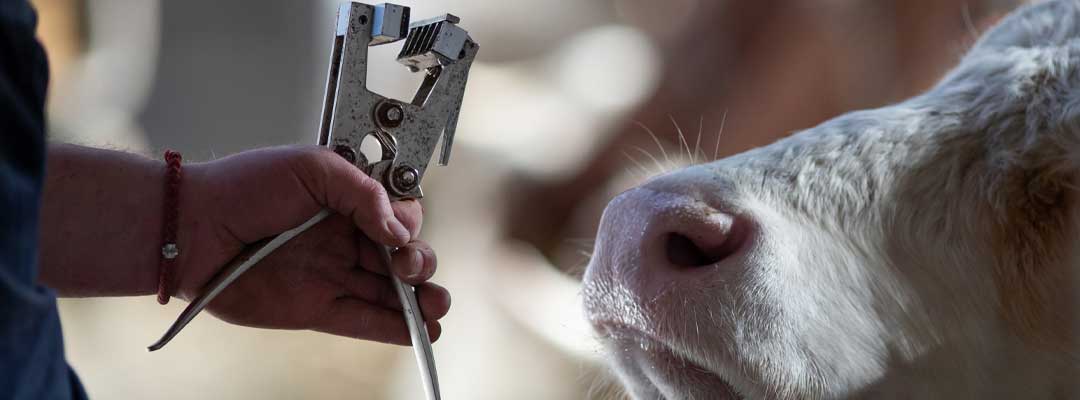Cattle Ear Tattoo Application and Best Practices
Veterinarians share tips for applying livestock tattoos, and more

Below, Tony Hawkins, DVM, Valley Vet Supply technical service veterinarian -- and Julia Herman, DVM, MS, beef cattle specialist veterinarian with the National Cattlemen's Beef Association (NCBA) -- detail the application of livestock tattoos and more.
“A tattoo makes a permanent form of identification -- it is often required for registration with breed associations, so seedstock producers should tattoo their cattle,” recommends Dr. Hawkins. “In addition to this, it can make an excellent ‘backup’ form of identification for commercial producers.”
For example, Dr. Hawkins shared that if an animal loses their ear tag, you can reference the tattoo number and use your records to reapply the correct ear tag number.
Some downsides of tattoos include the inability to read without restraint, problems with legibility, and the time/equipment required to perform the procedure.
Applying a tattoo? You’ll need:
- Tattoo pliers
- Tattoo digits
- Tattoo ink
- Paper towels or cloth
- Toothbrush
- Rubbing alcohol
- Thick paper/cardboard
- Halter
- Disposable gloves
Shop cattle ear tattoo equipment.
Best Practices for Applying Livestock Tattoos
- If you have registered cattle, talk with your breed association and follow their guidelines for tattoos, recommends Dr. Herman. Work with your veterinarian if you have questions.
- Ensure cattle are properly restrained in a chute (a fitting chute is not recommended.)
- Clean the ear using paper towels or gauze and rubbing alcohol to help avoid infection and potentially spreading a virus from one animal to the next. Alcohol is the recommended disinfectant when tattooing -- using soap, iodine or chlorhexidine can cause the tattoo ink to smear and not stick.
- Before tattooing the ear, you can make a test run to ensure proper placement -- use the tattoo on the thick cardboard to make sure digits line up.
- Dr. Herman recommends wearing rubber or disposable gloves when tattooing for biosecurity and to keep hands clean. “My preference is to clean the ear, put the ink directly into the ear where you’ll put the tattoo, and firmly close the pliers to press ink into the tissue. Next, I have a toothbrush that I use to rub ink into the tattoo holes. Then, I place the applicator into a cup or bucket with alcohol in it, so it’s disinfected between animals.”
- The tattoo should last years, so make sure you have firm, even pressure when pressing the applicator together on the ear. Apply the tattoo in the unhaired portion of the inner ear away from where hair is growing. The hair follicles will grow where the tattoo was placed, which will cause fading. Producers may need to check back for legibility over time.
- Emphasize human safety when applying cattle ear tags or livestock tattoos, while working around the head of these animals. Make sure cattle are restrained appropriately, and if needed, use a halter.
Remember, before tattooing cattle, you should determine the ID configuration you’d like to use in your herd.
Learn about applying cattle ear tags, another common form of cattle ID, and shop identification methods at ValleyVet.com.


